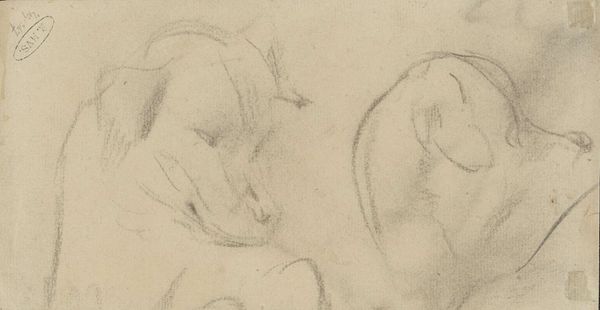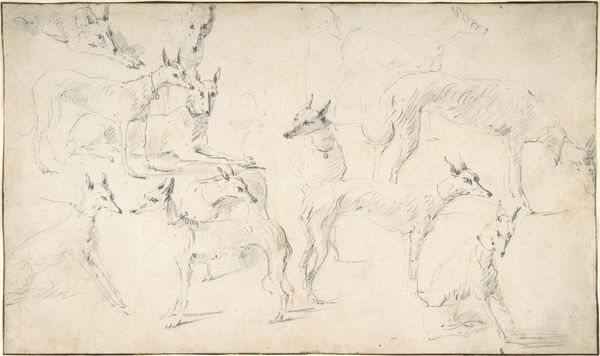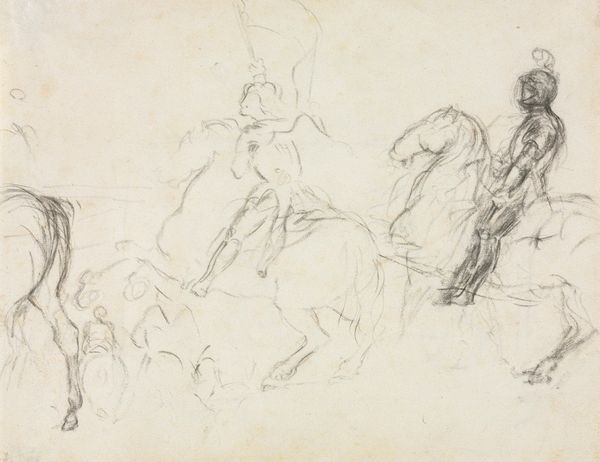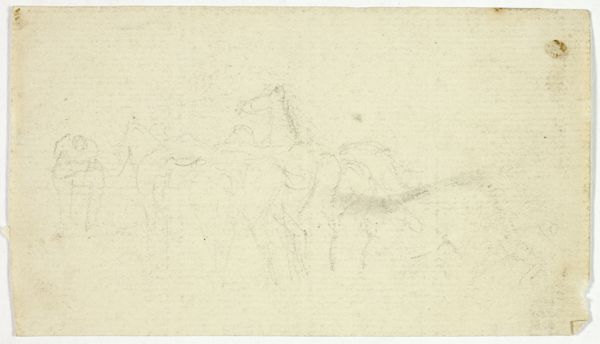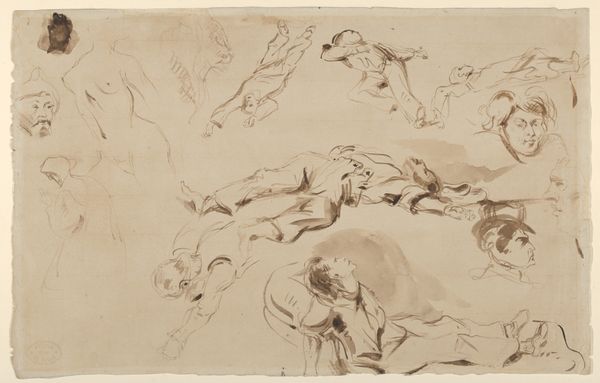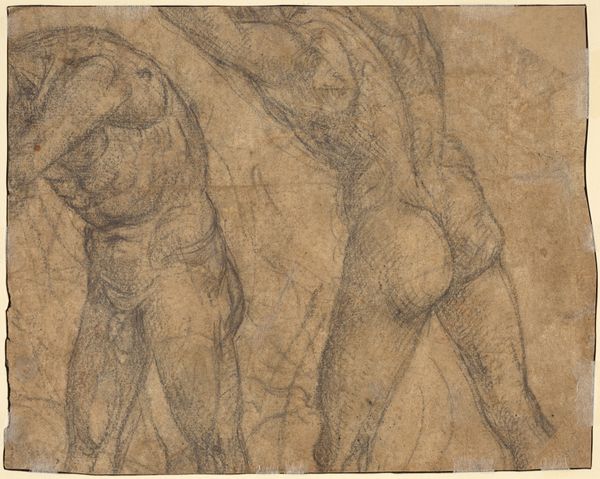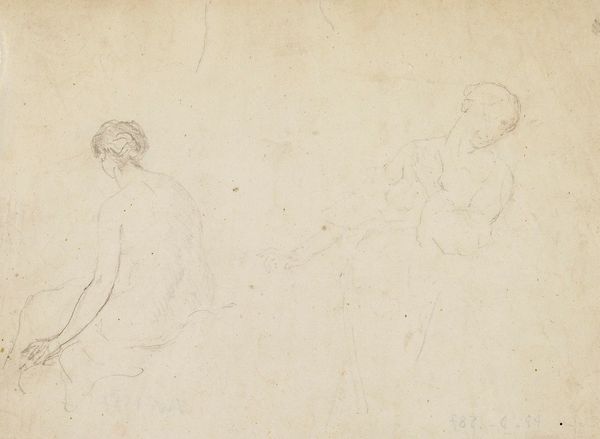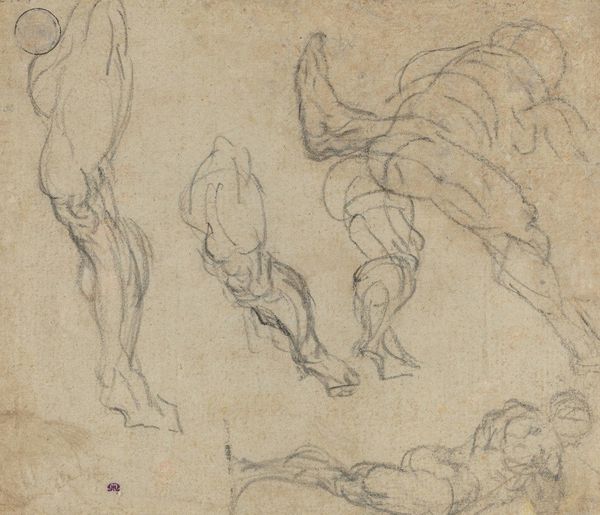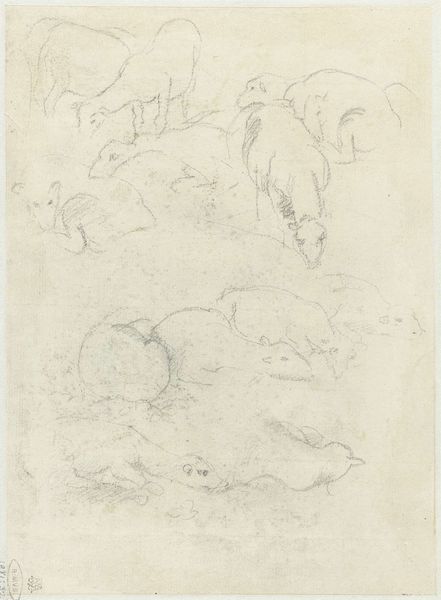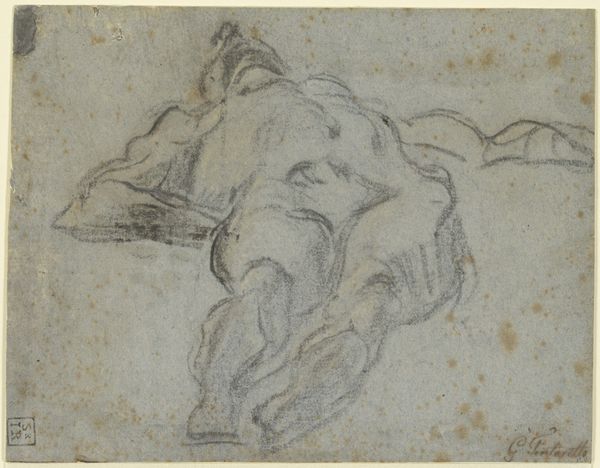
drawing, pencil
#
portrait
#
drawing
#
figuration
#
pencil
Copyright: Public Domain: Artvee
Curator: Before us is a drawing titled "Deux esquisses de chiens, et deux croquis de tête de chien," which translates to "Two sketches of dogs, and two sketches of a dog's head," by Narcisse Virgilio Díaz. It's a pencil drawing, presenting studies of dogs. My immediate impression is how delicately the artist captures the inherent grace of these animals through simple sketches, devoid of sentimentality, yet remarkably lifelike. Editor: Lifelike, yes, but for me, there is something inherently class-related to the dogs. It recalls images of wealth, aristocratic connections to animals as emblems, representations of class and hunting culture within Diaz's context. How are they more than *just* canines, do you think? Curator: I see your point, yet it reminds me how frequently canines appear as symbols, bridging natural instincts with trained loyalties. In terms of art history, depictions of dogs were often charged symbols. Even just their breed, like we see here with a sort of sighthound or greyhound form, brings the symbolism. Dogs serve as multifaceted mirrors reflecting our complex selves through history and the psychology of the master-pet relationship. Editor: I find that analysis a touch conservative and erases Diaz's likely aristocratic patronage that informs the images, to then separate them from questions of how class impacts these depictions. I keep returning to how sighthounds have histories linked to nobility, exclusive hunting rights. Curator: I agree that it might indicate specific contexts such as aristocracy. Dogs have been emblems of power across cultures for centuries. In certain traditions, they appear in sacred narratives, in others, guarding liminal spaces. The dog's loyalty translates beyond simple servitude; its keen senses link it with divination, clairvoyance and even the journey through the underworld in cultures throughout history. In short, Diaz uses symbols rooted deep in our collective visual vocabulary. Editor: I still can't look at these creatures neutrally. Dogs in art became tools of empire, colonial structures even, when coupled with human exploitation or domination scenarios! Dogs were also racialized in colonial and slavery depictions to indicate "domesticity" or "control". How often do we overlook these less attractive symbolical burdens that come with pretty aesthetics? Curator: I’ll consider what you have said to try to look past their superficial charm to better grasp how deeper cultural forces are represented. Editor: Thank you for sharing in return; it’s vital to question these comfortable facades—to remain alive to complex inheritances, wouldn't you say?
Comments
No comments
Be the first to comment and join the conversation on the ultimate creative platform.
